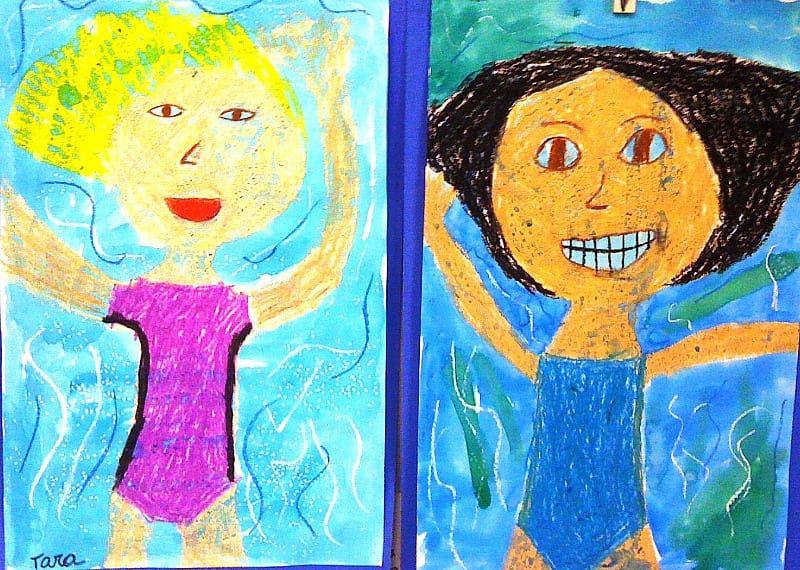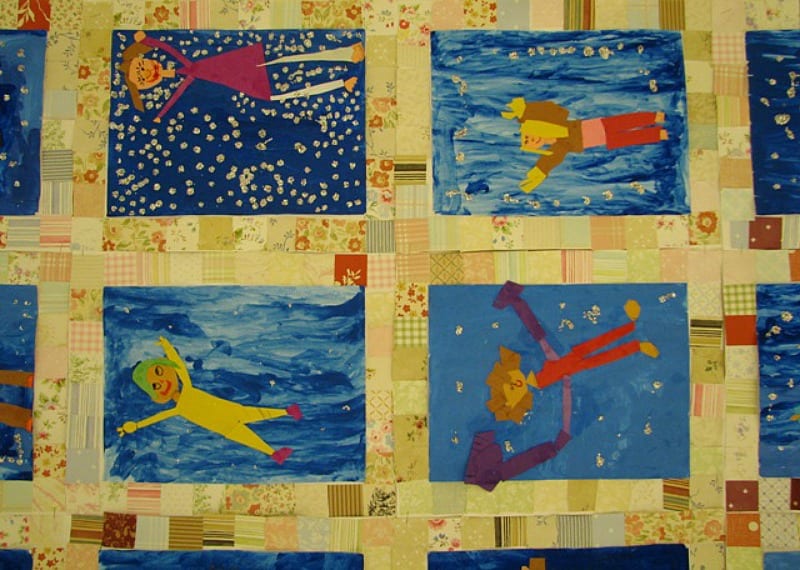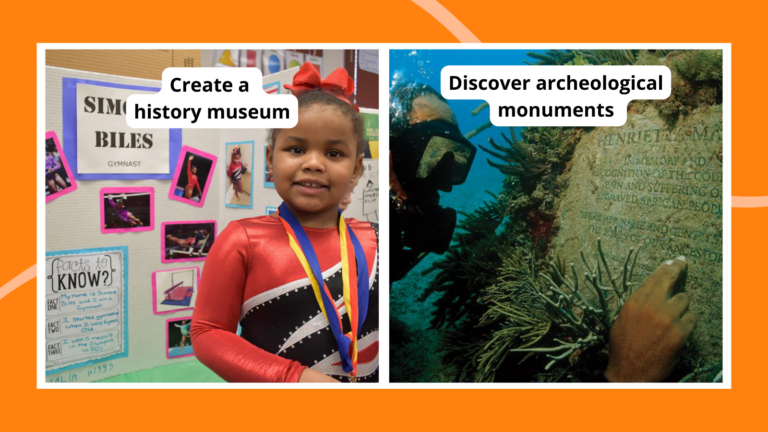While Black History Month is meant to celebrate one particular culture, it is an opportunity for everyone to learn, share and take pride in the Black achievers that came before us and continue to make history. One of my favorite ways to do this in my own classroom is through art. Here are five African-American artists whose art is beautiful, interesting, and meaningful. Plus some project ideas to emulate their wonderful art.
1. Alma Thomas
THE ARTIST: Alma Thomas was an expressionist painter who was born in 1891. Her early work was representational, but she evolved into her signature of work on canvas that is characterized by shapes color, rhythm and powerful emotions. Thomas was a black woman in a field dominated by men. Furthermore, she didn’t even begin to focus on her painting until she was in her 60s, after retiring as a school teacher.
THE ART: Some artists tell stories by creating images of things that we can easily recognize and understand, but abstract expressionists like Alma Thomas tell stories using shapes, color and pattern. What makes art like this so wonderful is that everyone gets to decide for themselves what they think the picture is about.
THE PROJECT: I like to imagine that the colors Thomas uses correspond to different emotions and that she tells a story about how she feels by how and where she puts the colors. An easy way to model the art of Alma Thomas is with torn paper collages. You’ll need sturdy paper for the canvas, different color paper to tear into shapes and glue—that’s it! Have the students plan out there collage first or just go where the colors take them.

2. Jacob Lawrence
THE ARTIST: Jacob Lawrence was born in 1917 and unlike Alma Thomas was a very young man when his painting career was at its height. He painted both historically significant moments of African American history as well as scenes from the daily life of ordinary people. His painting was representational and even narrative; some of his most famous work is images in a series such as the Great Migration, which tells the story of Black Americans moving from the south to the north after World War I.
THE ART: While his style was representational, his work is somewhat abstract. It is characterized by people and faces with no specific identity or facial features and bright primary colors in combination with deep blacks and browns.
THE PROJECT: To explore the work of Jacob Lawrence further I suggest focusing on his stories and his process rather than his style. Students could choose an important moment or series of moments from their personal and family history and visually represent it. Like Lawrence, the students can choose a color story or a palette to work with that captures the feeling and memory of that moment. I love the project (pictured below) from this blog.

SOURCE: Sandburg Art Enrichment
3. Aaron Douglas
THE ARTIST: Aaron Douglas was born in 1899 and made art during the Harlem Renaissance. The Harlem Renaissance was a frenzy of art and cultural expression that happened in Harlem, New York that produced new art, music and literature. While the explosion of all this new art took place in the 1920s, Harlem continues to be a center of African-American art and culture today.
THE ART: Aaron Douglas painted murals and large scale paintings that are easily recognized by their lush colors, wild movement and symbolic images. He is also known for his signature use of concentric circles that create the appearance of movement and light throughout the image.
THE PROJECT: I have used the work of Aaron Douglas to show children how to really look at art. Finding the circles is like a treasure hunt within a picture. Once you and your students have found the circles, you can explore what the circles of light are highlighting and how they help to focus your attention on certain parts of the painting. Discuss what other shapes and patterns can be found in the images. To model the work of Aaron Douglas, I focus on the use of pattern and shape, especially the circles. Using a bunch of collected circle shapes (container tops, paper towel rolls) I have the students first draw or paint their image and then stamp their circles on top.

4. Elizabeth Catlett
THE ARTIST: Elizabeth Catlett was born in 1915 and spent her early years in Washington DC. Both of her grandparents were freed slaves and this narrative would come to play a very central role to her prints and sculptures. Her sculptures are known for their round, intuitive physicality and often depict mothers and their children. Her printmaking usually depicted what she called “ordinary people.” She has said that she wanted to make art for ordinary people to enjoy and discover. All of her artwork had a deeper message of justice, activism, and empowerment for these same ordinary people.
THE ART: In 1946, Catlett had the opportunity to study in Mexico. This influence is recognizable in her work, both in the style and in the focus on political and social themes. Exploring the work of Elizabeth Catlett gives you and your students a chance to learn about the process of print making. Catlett made prints using the linoleum block method, in which a sheet of linoleum is fixed to a block of wood and then a design it etched in the surface. You can make an image by layering a few different etched images on the surface on which you are making your print.
THE PROJECT: We can replicate Catlett’s process by using any small, flat object that can be etched or scratched. I have done this using Styrofoam paper plates or sheets of foam. Once you have been able to etch or cut your simple image on to your surface, put a thin layer of paint in a plate or shallow flat container. Then you layer your images and if you like finish them off with small details.

5. Faith Ringgold
THE ARTIST: Your students will probably know the artwork of Faith Ringgold because of her very popular book Tar Beach. Like Elizabeth Catlett, Faith Ringgold was a teacher and a lot of her work centers on social justice, fighting racism and telling the stories of African-American individuals, families, and communities. She has written almost 20 children’s books.
THE ART: In addition to looking at her famous picture books, Ringgold made a wide variety of art including paintings, costumes, performance, sculptures and quilts, and she is still making art today. Her influences include German quilt-making, her mother’s dressmaking, and African American Literature, and are as diverse as her artwork.
THE PROJECT: To celebrate the artwork of Faith Ringgold you can make a classroom quilt. You will need sturdy paper cut into squares and paint, markers and other supplies to decorate your quilt squares. Decide together if you want your quilt to tell a singular story, many stories or use shapes and patterns. This would be a great way to decorate a bulletin board or classroom door. Check out the cool quilt project (pictured below) from this blogger.

SOURCE: WES Kindergarten Art
I hope you and your students enjoy studying these great artists as much as mine do. Learning about and celebrating their work and their stories is a great way to honor Black History month and any other month of the year.

